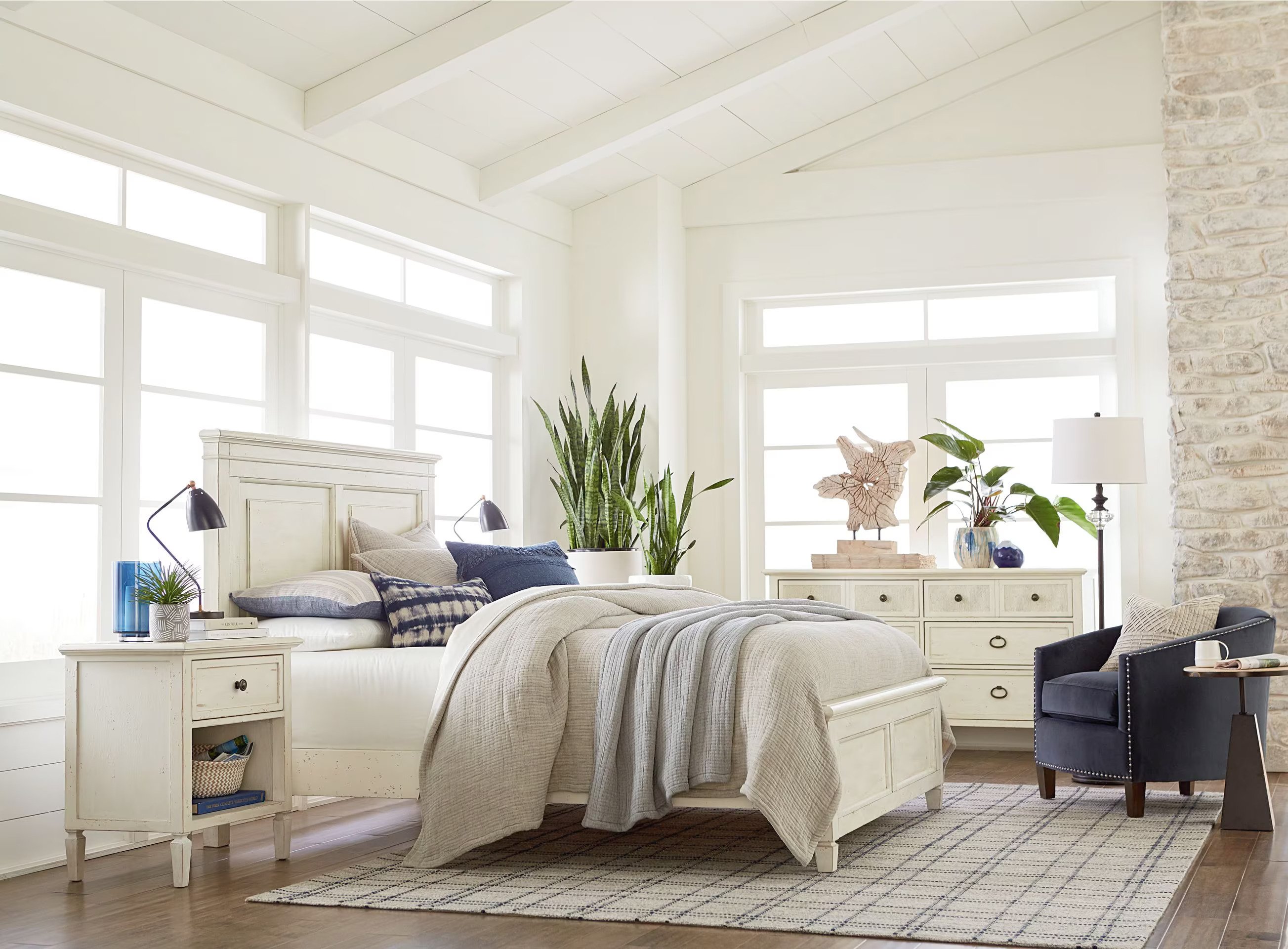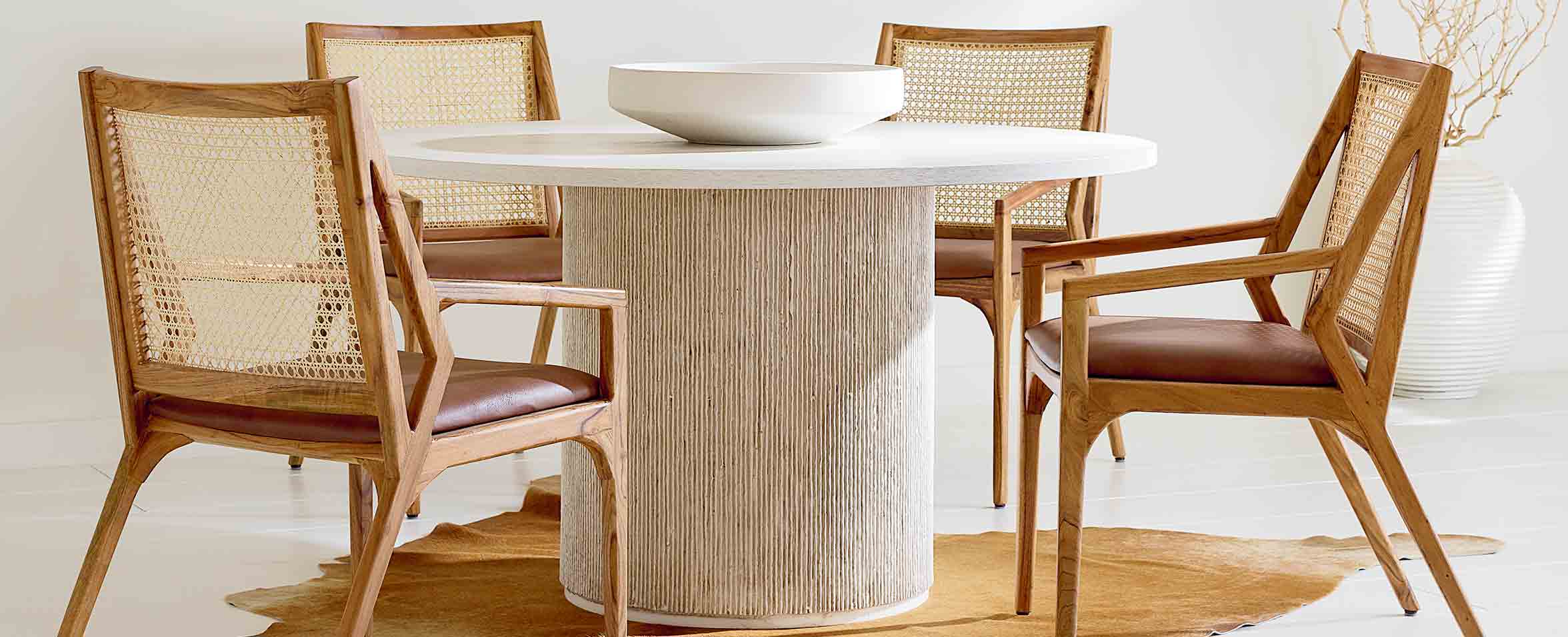How To Decorate the Walls of Your Home
Updated 2/3/23
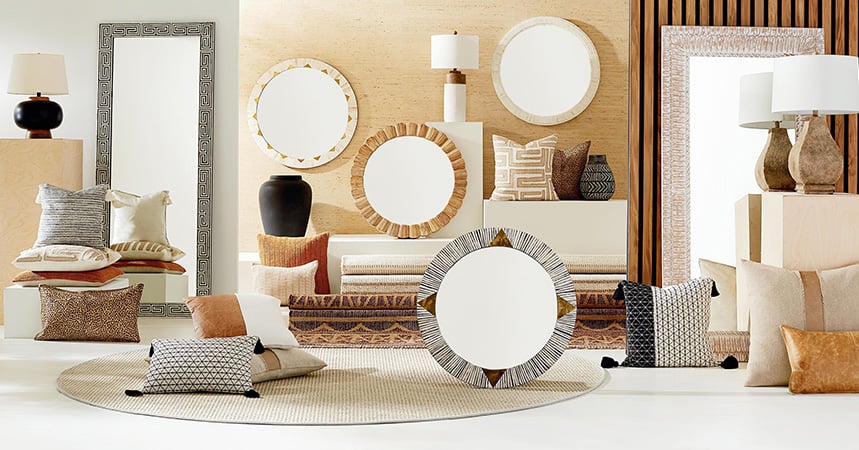
Wondering how to hang art or a Mirrors without all of the fuss?
Here we will discuss wall art ideas, wall decor ideas, and go over how to decorate a wall in general. Have you done this before… put a few nails in a wall, hang your artwork, then see that it’s crooked? Then you have to reposition the artwork so that it covers the wrong hole and hope that you get it right the second time. Or maybe it doesn’t look quite right in the space at all. This article covers all the bases for decorating a wall, including decorating ideas for your wall and some pointers on how to hang wall decorations.
Hanging Wall Art
When you have a wall space that’s ripe for a little design, why not inject some personality with a gallery wall? A curated collection of some favorite pieces makes a statement about who you are and what you like. You may already have some favorite family shots to create a photo gallery wall in the stairway or a collection of floral prints that would bring out the colors in your living room. With a few gallery wall layout options and a few tips about how to create a gallery wall, you’ll learn how to design an art gallery at home in no time.
Start with a few pieces you want to hang - prints, paintings, children’s art, photos, or 3D sculptural objects. Think about incorporating a stylish clock or an interesting mirror. Ideally, the pieces should share a similar theme or color palette. Then choose frames that are also related to each other in color, theme, or style. You may even find a coordinated set of prints, or empty frames to fill. Once you start collecting, you might find several gallery wall ideas.
Wall layout options
There are a few general arrangement options for creating a gallery wall layout, these ideas for wall decor and a wall design ideas include:
• A grid or linear gallery wall layout comes across as more formal.
• A salon arrangement – an eclectic grouping of images and objects – reads as more playful or informal.
• Picture ledges are also more informal, and they offer additional flexibility by enabling you to move things around without lifting a hammer. That way you can easily change your arrangement, layer it or rotate pieces in and out.
Whichever design for your home art gallery you choose, you’ll save time and a lot of nail holes by arranging it on the floor before you hang anything. Start with the focal point. This is usually the largest item and would go near the center. Experiment with different arrangements, aiming for symmetry and balance. Snap a picture of each arrangement so you can compare and decide which you like best.
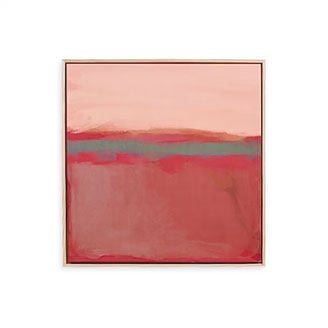
Hanging wall decorations
Designing an art gallery at home is a bit of an art in itself. A level, a measuring tape, and a pencil are your friends in this situation. Plan to start the center of your design at eye level, which is generally 57 inches from the floor. Allow 12 inches above any furniture, and try to balance the pattern against other furniture. There should be a minimum of 1 inch between frames, and ideally 3 or 4.
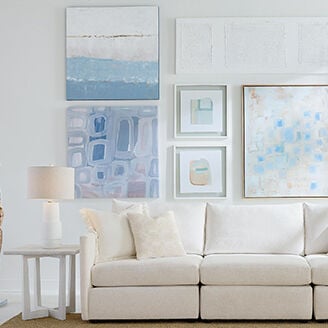
For a surefire method of hanging your gallery wall right the first time, you can trace the gallery wall layout onto a large sheet of craft paper, and then use masking tape to affix it to the wall. You can actually hammer the nails right through the craft paper to make sure everything hangs just as you envisioned it.
Hanging Art: Mistake #1: Hanging Your Art Too High
Hanging Art: Mistake #2: Hanging Your Art Too Low
If you have extra high ceilings, it will look awkward to hang pictures at eye level, leaving all that blank wall space above. Instead, divide the height of your wall into four equal sections. Then hang your pictures and artwork in the third section from the floor.
One exception to this rule is in children’s rooms. You may want to hang art at their eye level or at least lower than your own.
Mistake #3: Pictures Not in Proportion with the Space
Your art should be in proportion to the surrounding space. So, no small pieces are mounted up high or on large walls unless it’s part of a gallery wall display. Avoid hanging large pieces of art that overpower a wall or room.
When hanging artwork, a mirror, or pictures above a sofa, the bottom of the piece should fall between six and eight inches above the top of your furniture. And the width should run about two-thirds the length of your sofa. When choosing art to hang above a fireplace, make sure your piece is at least as wide as the fireplace but no wider than the mantle.
The secret to hanging decorations
This one’s a biggie… hang your artwork 57 inches on the center. This is probably the biggest secret no one knows.
Fifty-seven inches is the average person’s eye height. Art galleries use this measurement when hanging art on their walls. By hanging your artwork at the same centerline versus lining up the tops or bottoms of the frames, you’ll have a continuous visual center line as the eye looks around the room.
Here’s how to do it:
Step 1: Measure 57 inches from the bottom of the floor and lightly mark it on the wall with a pencil.
Step 2: Measure your artwork and divide by two to get the center of your artwork.
Step 4: Subtract the number you get in Step 3 from the number you get in Step 2:
Step 3: Measure the area on the back of your art piece from where your nail will hang to the top of the piece. (If your nail will hang from a wire, make sure that the wire is pulled tight toward the top when you measure as if it were already hanging on a nail.)
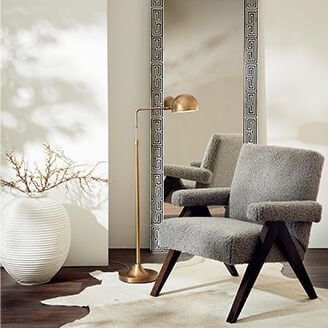
Step 2 – Step 3 = How far above the 57-inch mark to place your nail.
Step 5: Mark your nail hole lightly with a pencil & hang your art!
Note: If your picture or art will require two nails, be sure to use a level, a string, or a yardstick to ensure you set the nails level for the picture to hang.
Styling a wall
The same 57-inch concept applies if you are creating a gallery wall using art, mirrors, or another display. Start by hanging your center artwork/pictures first, making sure that the center of these pieces remains at 57 inches above the floor. Then hang the rest of your gallery pieces above and below.
Generally, allow two inches between a display of large pieces or pictures with wide frames. If your display consists of smaller photos, then allow one to 1 ½ inch between your frames.
And what type of picture frames should you choose? Well, the answer there is varied. You may want to create a display using identical frames, the same frame in different colors, or the same color frame throughout. If you’re into vintage, then maybe you decide on an eclectic array of vintage frames to hang on your wall. It’s up to you. Just start from the center when hanging your gallery wall and work your way out.
If you’re not sure what pattern to use for your gallery wall, you may want to draw it on paper first. Another option is to cut out paper or newspaper to match the size of all of your frames. Then play with different layouts using your paper cutouts on the floor until you get it right.
What if you know how to design an art gallery at home, but the idea still seems daunting? Casey Folks, a design consultant at Basset Home Furnishings in Dallas, shares that there are plenty of other ways to design your wall. With a few simple items like a big mirror and two sconces, “we can make it look really elegant and finished.” So even if a gallery wall is not your thing, you can still create a personalized statement with a few shakes of a hammer. Stop in or schedule an appointment today.
The most important thing is to have fun! Your pictures, mirrors, and art should reflect your style and personality. It’s an extension of you, so let yourself shine through in your art and your display.
Basset has a fun selection of art for everyone’s styles and tastes.
